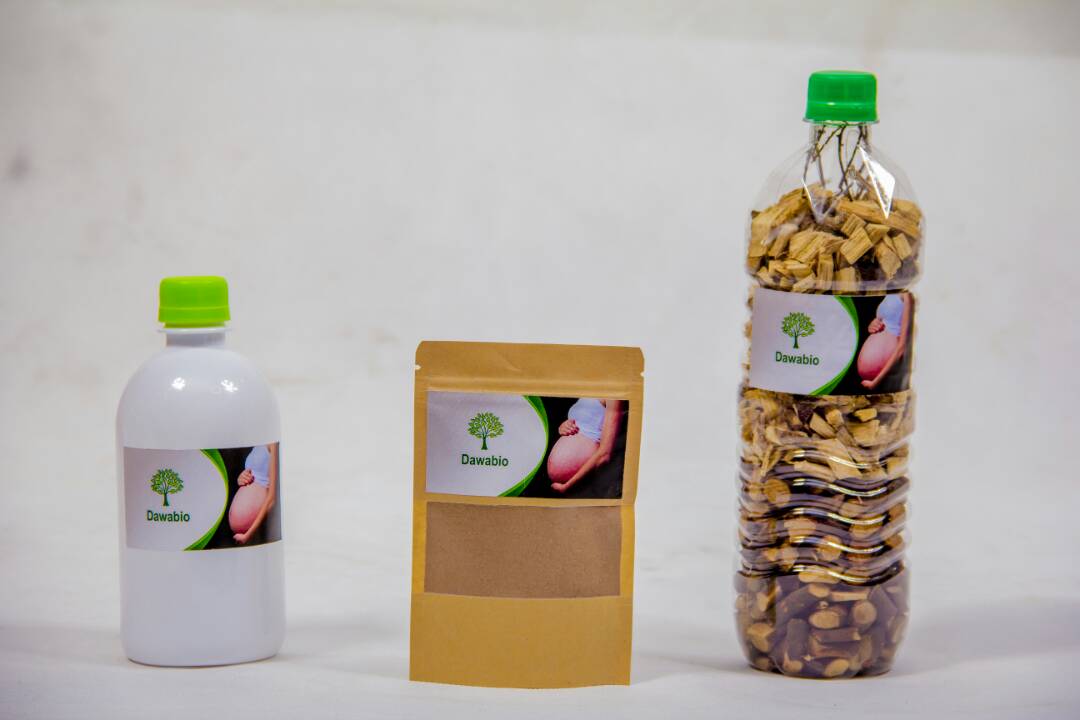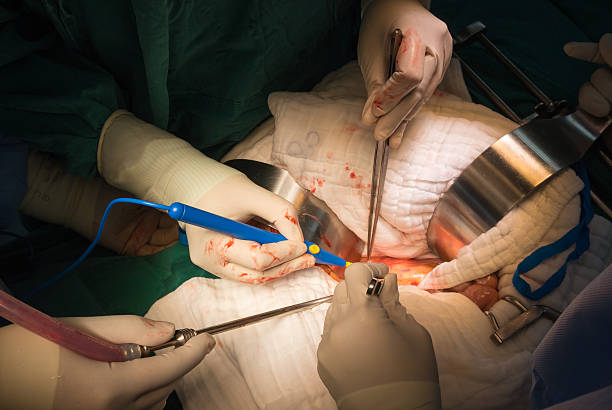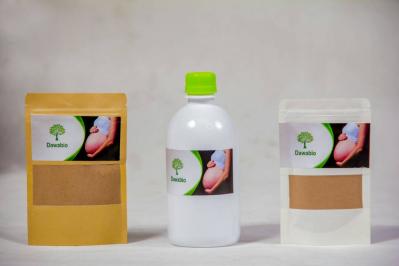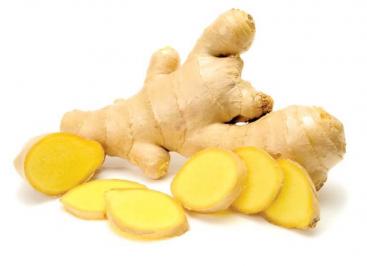- Home
- Blog
Blog

NATURAL TREATMENT FOR CLOGGED FALLOPIAN TUBES
On 26/12/2019
The fallopian tubes are muscle tubes lined with delicate hair-like structures. These “hairs” work in both directions; help egg travel from the ovaries to the uterus and help sperm come up from the uterus.
Each fallopian tube ends in fimbriae, which are finger-like structures. Fimbriae grab and guide an egg when the ovary releases it.
The fallopian tubes play an important role in conception because they are the place where most of the eggs are fertilized. If part of the fallopian tube is damaged, for example by surgery or an infection, it may be blocked with scar tissue.
The fallopian tubes blocked are one of the possible causes of female infertility. Usually, there are no symptoms, but certain risk factors can increase the risk of developing the disease. The medical term for a blocked fallopian tube is tubal occlusion. However, Dawasanté experts provide you with a natural herbal treatment to unblock the tubes without surgery, allowing you to quickly get pregnant.
Dawasante's natural treatment to unclog blocked fallopian tubes
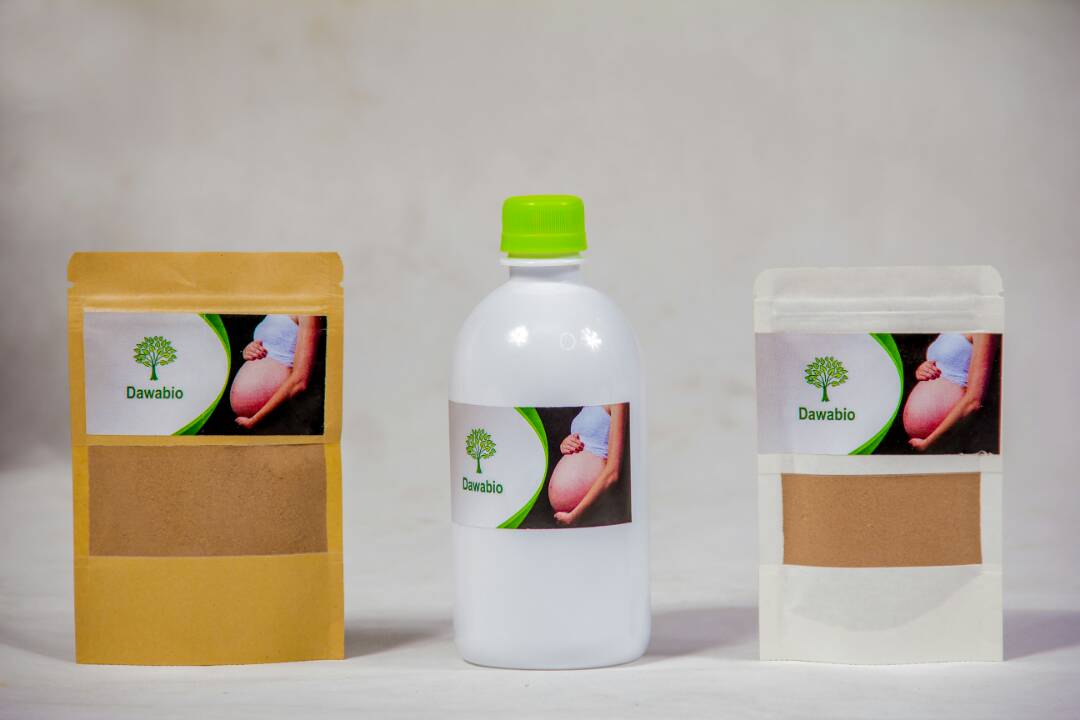
What if I have blocked tubes and want to get pregnant?
Here is the best African herbal remedy for unblocking the tubes and getting pregnant quickly . These herbs are very effective at unblocking the fallopian tubes. They have already enabled many women around the world who had blocked tubes to regain their fertility without operations. If you have blocked tubes, here are the medicinal plants that will allow you to experience the joy of being a mother
Click on the image below to discover this natural treatment.
To contact our experts please call or write to us on the following number, tel / WhatsApp
: 0022996374527
WE DELIVER ALL OVER THE WORLD
What are the best natural treatment for unclogging your tubes?
Thanks to our research, we have identified several effective homemade natural remedies to unblock the tubes and get pregnant quickly in addition we have:
11 remèdes naturels contre les trompes bouchées
1-Turmeric
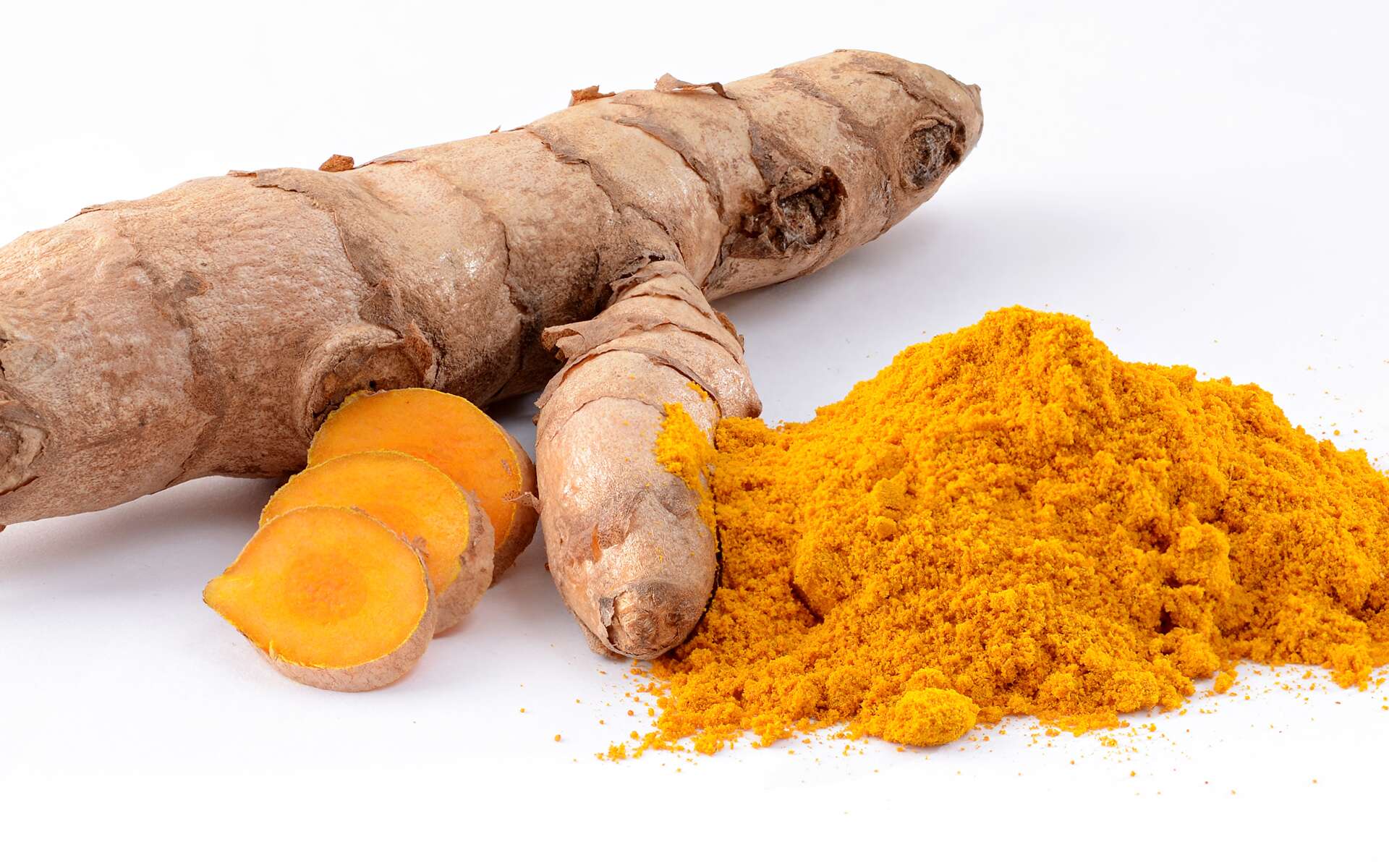
Turmeric is a natural anti-inflammatory. It can be very effective in unblocking the fallopian tubes. Curcumin, the active ingredient in turmeric is very effective in reducing inflammation. You can consume curcumin in supplement form, add turmeric to your food, or drink a glass of turmeric.
Turmeric has no known side effects when taken in small doses. However, at doses of more than 8 grams per day, it can have unwanted effects. Make sure you take the correct dosage of turmeric or, better yet, add the spice to your cooking.
2-Garlic
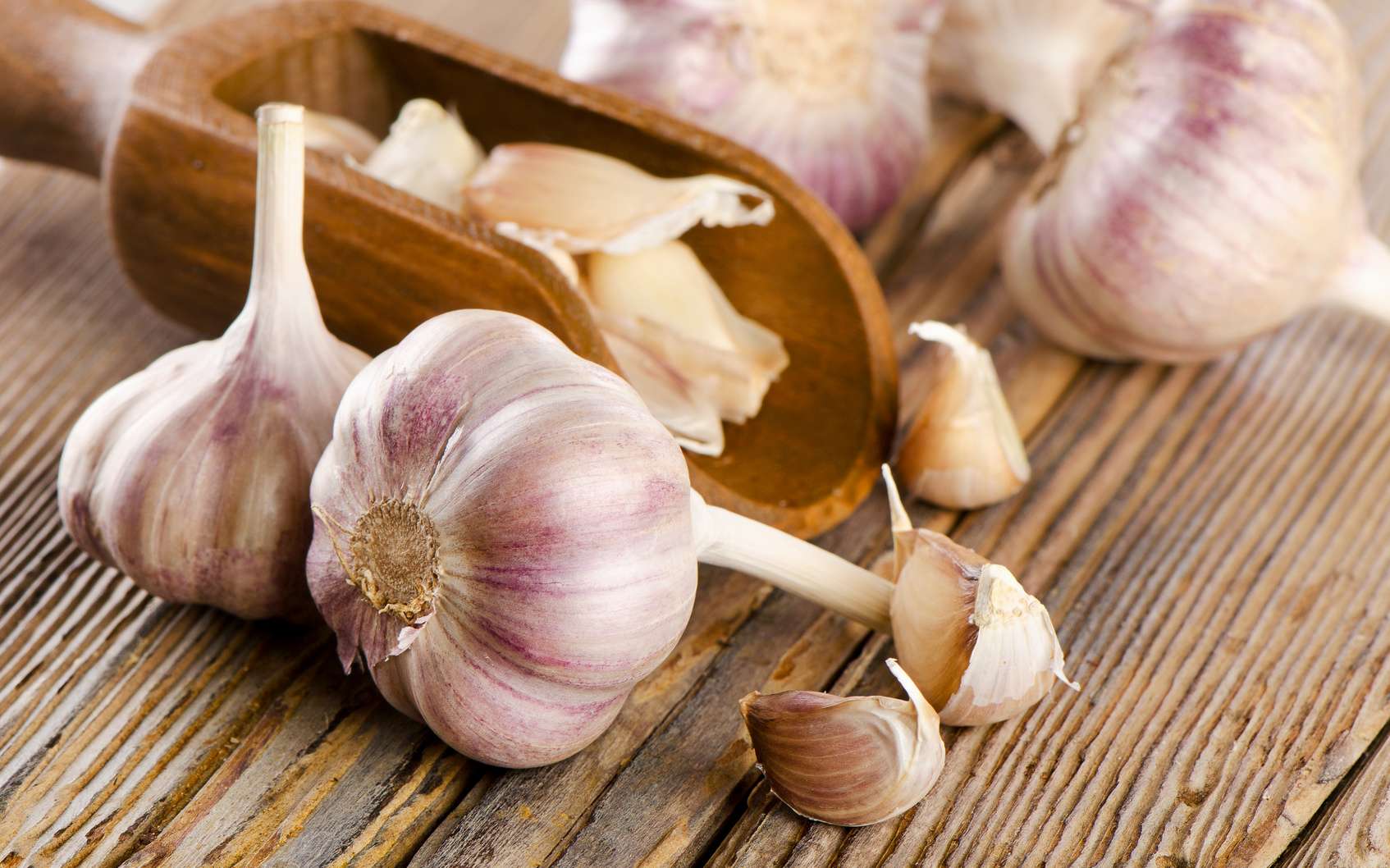
Garlic is a great way to improve fertility and unclog the fallopian tubes. Garlic has always been consumed for its many health benefits as the aphrodisiac properties present in garlic help to improve blood circulation in the body. Eating raw garlic daily on an empty stomach helps fight infertility in women, lowers blood pressure and cholesterol
3- Cleansing with a fertility diet

The fertility diet helps cleanse the entire reproductive system and increase blood flow to the reproductive organs. The herbs in this cleansing regimen are absorbed by the body and will work where they are needed. The fertility cleanse creates a "clean slate" in the body which helps the body respond better and use other natural remedies.
This fertility diet cleans up the food waste that you need to avoid and synthesizes more that you need. Foods that you should avoid are alcohol, cigarettes, non-organic meats and dairy products, processed foods, processed white seeds, white sugar, fried foods, soy foods.
When it comes to what you should eat, the following should be suitable for fertility cleansing:
- Eat all organic vegetables.
- Eat low amounts of dairy products and make sure the ones you eat are organic.
- Eat fish at least three times a week.
- All types of red meats are recommended.
- Avoid chicken or chicken products.
- Seeds are also highly recommended
- Consume foods with high enzymatic proportions
- Avoid all refined sugars or fruit juices (unless it is freshly squeezed).
- Drink plenty of clean water.
4- Castor oil

the castor oil has been used for centuries to enhance fertility in women, and in particular to unblock fallopian tubes. How is it used?
-dip a cloth in castor oil
-Place this cloth on the skin on the lower abdomen. This will improve circulation and promote healing of the tissues and organs under the skin. Castor oil therapy helps the fallopian tubes by softening tissue and improving circulation in the pelvic area.
5- Apple cider vinegar
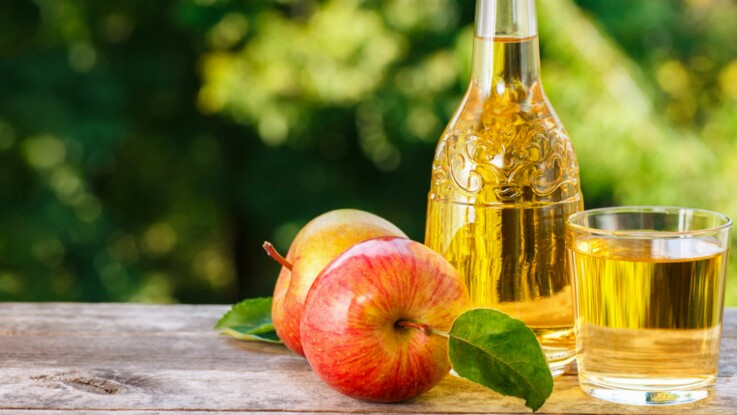
Apple cider vinegar is a fermentation product that produces yeasts and bacteria that are beneficial for unblocking the tubes. This is because vinegar contains a number of vitamins and minerals, including magnesium, potassium, copper, group B vitamins, and vitamin C. Taken daily, it can help unblock the fallopian tubes by balancing hormones and shrinking fibroids.
Instructions for use:
-Mix 2 tablespoons of apple cider vinegar in 1 glass of water
-You can add a touch of honey or molasses to soften the mixture.
-You can drink the mixture right away or sip it for 30 minutes.
6-Meditation

Meditating daily will help lower stress levels and promote general healing. However, reducing stress reduces deterioration and inflammation of the fallopian tubes.
As an additional tip, don't forget to start meditating with a short session consisting of breathing exercises and relaxation techniques. Even if you only do it for a few minutes, meditation will provide you with positive energy to start your day and reduce your stress.
7- Fertility massage

Some alternative medicine practitioners suggest fertility massages to unblock the fallopian tubes. These usually involve hot oil massages on the abdominal area. How to do a fertility massage?
- Lie down on an exercise mat with your face up and a pillow under your lower back.
-Relax and apply almond, olive, or lavender oil to your hands and apply by massaging your pubic bone, as the uterus is below this bone.
-Gently massage from bottom to bottom and pull your abdominal wall towards the navel. Maintain this position, count to 10 and release your hands. Repeat this maneuver 10 to 20 times.
NB: Do not do this if you are bleeding or are pregnant. Also, if possible, visit a massage therapist who specializes in abdominal massage for best results.
8- Mugwort

Mugwort is a plant sometimes recommended to improve female fertility. It is also recommended for unblocking the fallopian tubes.
Mugwort has a long history of use for fertility in a number of different cultures. It has been used all over Europe and Asia for centuries. It is often used in Chinese medicine in the form of moxibustion, which involves burning a mugwort above an acupressure point.
9- Green clay
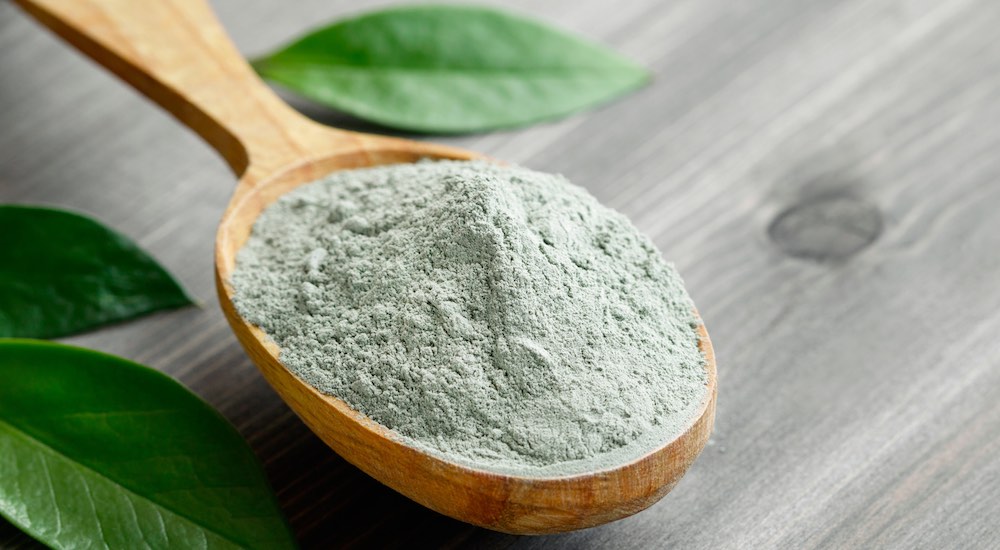
The use of green clay to unclog the proboscis is very common in East Africa.
The blocked tubes are released by the serious treatment of green clay and the follow-up of a feeding program made by a dietician or a naturotherapist.
10- Foods with antioxidants
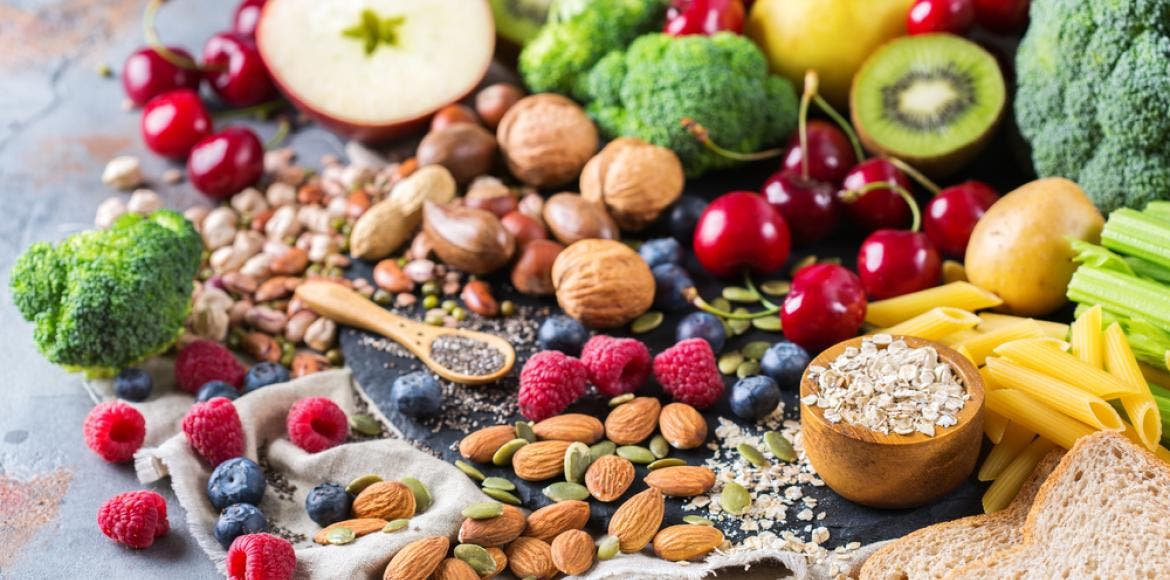
Try to avoid things like meat from animals as they contain hormones that can affect a woman's hormones like estrogen. Replace them with foods rich in antioxidants to promote wound healing. Foods rich in antioxidants are:
- Fresh fruits, vegetables (all kinds)
- Vegetable oils like sunflower oil, coconut oil, olive oil.
- Tea, chocolate, soy, coffee, and cinnamon are high in flavonoids (a type of antioxidant).
- Carotenoids are plant enzymes that have antioxidant activity and can reduce the build-up of free radicals in the body. Carotenoids can be stored by consuming eggs, fruits and red-yellow vegetables like carrots, mangoes, peppers, papayas, citrus fruits, spinach, etc.
11-Stop drinking and smoking

The blockage of the fallopian tubes most often occurs when you are under excessive stress. So, you need to improve the quality of your life to be on track to naturally unblock the fallopian tubes.
Alcohol and smoking are considered to be primary factors for such illnesses and are important for relief by permanently giving up these habits. Not only will this action improve the conditions of the fallopian tubes, it will also improve the health of your body, nails, hair, teeth and even your skin.
If you are a regular smoker or an alcoholic, now is the time to start working out and quit altogether.
To contact our experts please call or write to us on the following number, tel / WhatsApp
: 0022996374527
CLOGGED FALLOPIAN TUBES AND FIBROIDS: Natural treatment
On 26/12/2019
The fibroid uterine cancer are not common tumors (benign) of the uterus and are the most common reason for recommending a hysterectomy. They grow from the muscle wall of the uterus and are made up of muscle and fibrous tissue. Many women over the age of 35 have fibroids but usually have no symptoms. Fibroids can be the cause of blocked tubes. Here is a treatment to cure fibroids naturally and prevent blocked tubes. Click on the image below to discover this natural treatment.
To contact our experts please call or write to us on the following number, tel / WhatsApp
: 0022996374527
WE DELIVER ALL OVER THE WORLD
In some women, however, fibroids (myomas) can cause heavy bleeding, pelvic discomfort and pain, and occasionally put pressure on other organs. These symptoms may require treatment. Treatment may take the form of drugs to control pain and bleeding, hormone therapy to shrink the tumor, surgery to remove the tumor, or a hysterectomy. There are promising new investigational drugs that can temporarily shrink tumors. These drugs can have serious side effects and are usually very expensive. These treatments may be sufficient or provide temporary relief and allow a woman to delay a hysterectomy, especially if she still wants to have children. In more severe cases, a hysterectomy may be recommended.
Some women choose to do nothing because fibroids will often shrink in size as a woman goes through menopause.
As for the fallopian tubes, they are an essential organ of the female reproductive system. Measuring about ten centimeters each, these two ducts formed by smooth muscles and covered by the peritoneum connect the ovaries to the uterus. During ovulation, the oocyte expelled by the ovary is captured in the pinna, the terminal part of the proboscis, and moved to the ampulla, the central part of the duct. This is where fertilization by a sperm can take place. Then, for 3 to 4 days, the embryo develops in the tube, the time necessary for its transport to the uterine cavity.
There is a link between blocked tubes and fibroids
First of all, in case of blocked or damaged tubes, know that there are three reviews to explore their functionality.
- Hysterosalpingography
- Laparoscopy
- Fertiloscopy
Many interventions, however banal, can damage the tubes: an appendectomy, a gynecological surgery on the ovaries or the operation of a uterine fibroid.
It is indeed essential that the uterine cavity is strictly normal in order to restore fertility. When fibroids are in the uterine cavity, they should be removed by hysteroscopic resection. A 5 mm or more conventionally 9 mm resectoscope is used to cut them chip by chip. Fibroids located far from the uterine cavity are rarely responsible for infertility and do not require surgery. In case of blocked tubes, they will also have to be removed by an operating technique identical to that used for fibroids.
Also depending on the extent of the tumor and its location, uterine fibroids can put fertility at risk.
This is because the tumor can block the fallopian tubes, deform the uterine cavity, and prevent the implantation of the embryo. Under these conditions, a uterine fibroid makes pregnancy impossible.
Fibroids , being a benign tumor, the size of which can sometimes lead to complications during pregnancy. Perhaps the cause of the obstruction of the fallopian tubes
which can occur after salpingitis (inflammation of the tubes of infectious origin), and can prevent sperm from coming into contact with oocytes.
It is important to remember that the advantages of operative laparoscopy over conventional surgery are numerous. It makes it possible to avoid the opening of the abdominal cavity and therefore results in the absence of postoperative scar, with an obvious aesthetic interest for the woman.
In addition, the duration of hospitalization is shorter than in the context of conventional surgery. Finally, the postoperative period is more comfortable for the patient, and there is a faster resumption of activity with a lower number of postoperative sequelae.
Finally, it should be noted that certain surgical indications may be justified even when the couple also has recourse to In Vitro Fertilization (IVF) or IVF with ICSI (Intra Cytoplasmic Sperm Injection), in order to improve the chances of pregnancy.
The tube-shaped uterine tubes are used to receive the oocytes released every month from the ovaries and to transport them to the uterus. When the egg is expelled by the ovaries during ovulation, it is sucked in through the pinna of the tube. Fertilization (meeting between the egg and the sperm) takes place in the tubes, during the journey from the egg to the uterus. In order for a woman to get pregnant and have a baby, the tubes must be functioning normally and be intact (at least one!). In 15% of cases of fertility disorders, the causes are linked to an abnormality of the tubes.
The exact reasons why some women develop fibroids are unknown. Fibroids tend to grow in families, and affected women often have a family history of fibroids. Women of African descent are two to three times more likely to develop fibroids than women of other races.
The fibroids develop in response to stimulation by the hormone estrogen produced naturally in the body and are sometimes the cause of wrong bite thus preventing fertilization. These growths can appear as early as age 20 but tend to decrease after menopause when the body stops making large amounts of estrogen.
Fibroids can be tiny and not a problem, or they can weigh several pounds. Fibroids generally tend to grow slowly.
The following factors have been associated with the presence of fibroids:
- Being overweight, obese
- Never having given birth to a child (called nulliparity)
- The onset of menstruation before the age of 10
How do I know if my tubes are blocked
The obstruction in the tubes is often difficult to detect because there are few symptoms (possibly some abdominal pain or more abundant vaginal secretions). Consultations and analyzes are only carried out during the infertility assessment carried out when the woman who wants a child cannot get pregnant, after having had regular and unprotected sex for 1 year.
When the tubes are blocked, it will interfere with the movement and progression of the egg and sperm. Either the egg cannot meet the sperm (and there is no fertilization) or there is fertilization, but the egg cannot progress to the uterus.
When fertilization does not take place or remains impossible, the egg is automatically lost in the abdominal cavity. We are talking about tubal sterility.
If the obstruction is not complete, the fertilized egg will be able to circulate, but will have difficulty making its way to the uterus. The egg will then implant itself in the tube and develop into an ectopic pregnancy. At some point, the tube will rupture, causing internal bleeding.
To contact our experts please call or write to us on the following number, tel / WhatsApp
: 0022996374527

WOMEN'S INFERTILITY: CAUSES, SYMPTOMS AND NATURAL TREATMENT
On 26/12/2019
WOMEN 'S INFERTILITY : CAUSES, SYMPTOMS AND NATURAL TREATMENT
What is female infertility? What are its causes ?
The infertility is the inability for a couple to achieve pregnancy or to a woman, to lead his term gestation. It is estimated that infertility is established after two years of unprotected sex. Unlike infertility, female infertility is not permanent. It can result from various gynecological disorders or dysfunctions: endometriosis, ovarian dysfunction, uterine polyps, obstruction of the fallopian tubes, obesity, stress, excessive alcohol consumption. However, to remedy this problem, Dawasanté experts provide you with a natural treatment based on medicinal plants to permanently cure infertility.
HERBAL TEA AGAINST FEMALE INFERTILITY
Our natural remedies are the secret to cure any form of female infertility. We offer you a definite advantage: the absence of undesirable effects and contraindications. The natural approach is often the best approach to find a solution. Our natural remedies have allowed many women to have children. Being natural products based on plants and herbs, our natural remedies have no side effects, either on the body or on health. Our natural treatment is not dangerous. You can therefore cure female infertility without fear of the appearance of side effects.
CLICK ON THIS LINK TO GET THIS PRODUCT !!
We deliver all over the world.
For more information, you can contact our experts on +229 51374202 direct line or by WhatsApp at the same number.
What are the symptoms of female infertility?
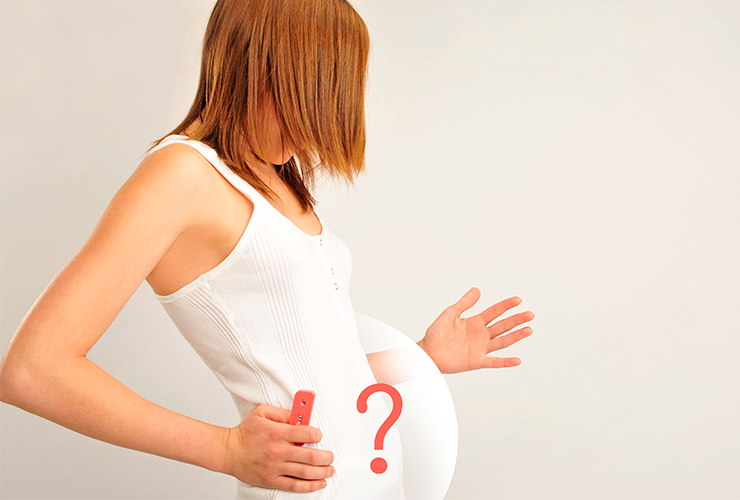
The main symptom of female infertility is the absence of pregnancy. But beware, conceiving a child can naturally take time. So do not worry if the baby tests follow one another without the expected result. The process of fertilization is complex and can take time. However, it is advisable to consult a gynecologist if the absence of pregnancy is associated with menstrual cycle disorders ( amenorrhea , dysmenorrhea, etc.), abnormal vaginal discharge, or pelvic pain.
Who are the people at risk?
From the age of 30, female fertility tends to decrease. In addition, tobacco, alcohol and caffeine consumption also represent potential impediments to fertilization and can increase the risk of spontaneous abortion. Finally, physical condition is also an essential parameter. Thus, women who are overweight or, on the contrary, very thin may have difficulty in getting pregnant.
How is the diagnosis of female infertility made?
In the event of difficulty in obtaining a pregnancy, it is essential to consult a gynecologist, the only practitioner authorized to carry out an appropriate medical investigation. For this, the health professional has a battery of tests to confirm and detect the exact cause of infertility: blood tests, vaginal smear, pelvic ultrasound, hormonal assessment ... For the most difficult cases, he can also perform the Hühner test, a post-coital test that allows, among other things, to analyze the quality of cervical mucus.
What are the treatments for female infertility?
Indeed, the management of female infertility will depend on its origin. If it is menstrual disorders, hormonal treatments (ovulation stimulators, etc.) may be recommended. In addition, the surgical route will be preferred in the presence of ovarian cysts or obstruction of the fallopian tubes, while the use of medically assisted procreation techniques will be offered to certain couples.
Plants for hormonal detoxification
Due to the number of pollutants present in our daily environment, we are constantly exposed to many products that disrupt our hormones. (1,2,3) We call them, moreover, endocrine disruptors. These substances or compounds interfere with the proper functioning of our hormonal system and can increase the risk of suffering from infertility. Even by eating well, by not taking the car, by making your cosmetics and cleansers yourself, you risk coming into contact with certain endocrine disruptors, if only in the air you breathe. One interesting strategy for preserving your fertility is to help the body detoxify itself from endocrine disruptors. Here are some interesting herbs to help the liver with this task:
Dandelion (root)
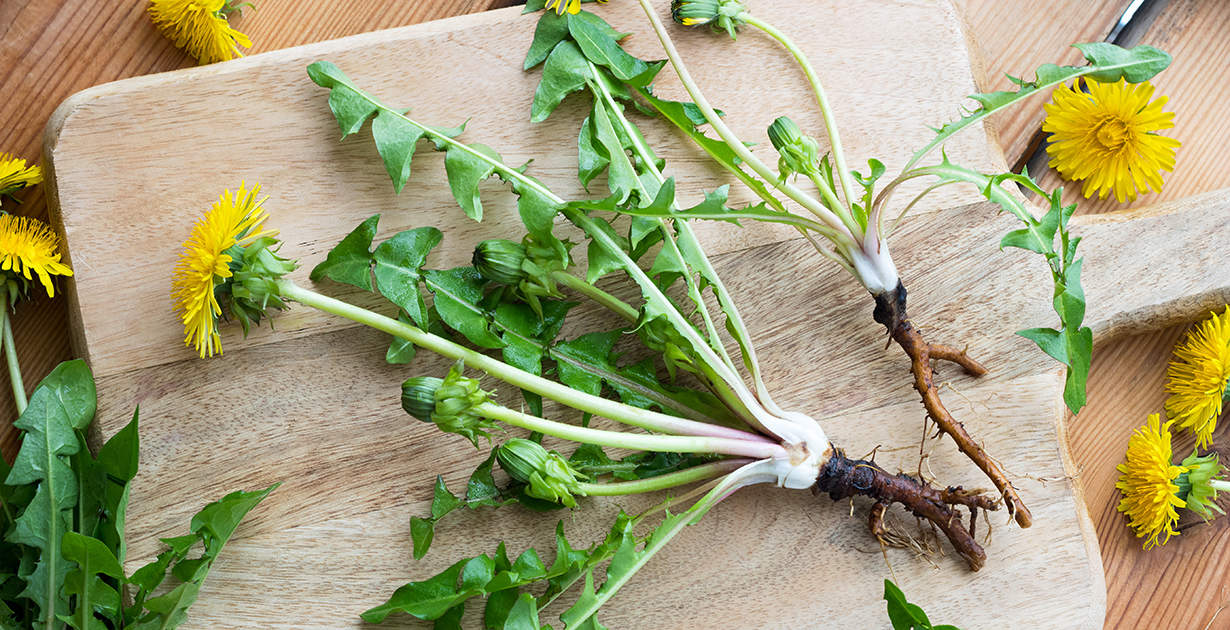
Dandelion is one of the best liver plants. We know that it is the liver that takes care of breaking down the surplus hormones with a view to their elimination and the dandelion takes care of decongesting it while helping the intestinal elimination of hormones via the bile.
Milk thistle (flower)

Another beautiful liver plant! Milk thistle will help protect the body from toxic and fertility-damaging substances and help decrease excess estrogen in circulation.
Turmeric (rhizome)

Turmeric is one of the most antioxidant and anti-inflammatory plants. It helps stimulate the liver and the gallbladder and therefore promote the elimination of excess hormones. It also helps reduce inflammation and prevent the formation of free radicals, 2 factors that are highly harmful to reproductive health.
Plants to reduce stress
Stress is very damaging to reproductive health. Among other things, it can disrupt the normal production of hormones, lengthen the menstrual cycle, prevent ovulation and adversely affect the quality of the ovum and sperm. To calm daily stress, here are some interesting plants to take in herbal tea:
Lemon balm (leaf)
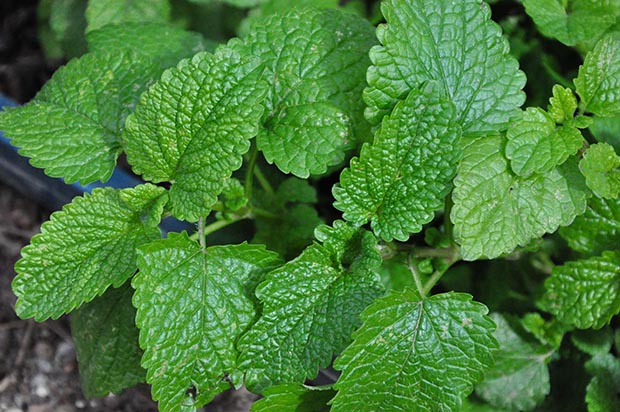
It is the plan of letting go! Have you been told that it is by letting go that you will get pregnant ? If you have difficulty, choose lemon balm. Plus, it will help your mood and digestion.
Oats (straw)

Oats are a great tonic for the nervous system. In addition, it contains several nutrients favorable to fertility and the cycle of women, including calcium. To be taken long term.
The motherwort (flower)
The motherwort is used for a range of problems including anxiety, depression, irritability, mood swings, etc. It is one of the best herbs to have on hand when the nervous system seems exhausted.
Plants that nourish the reproductive system
In addition, to get pregnant, it is important that the body has all the essential nutrients. The most important nutrients for male fertility are: copper, omega, zinc, selenium and vitamins B, C, D. For women: Omega 3, calcium, magnesium, iron, manganese, zinc and vitamins A (especially beta-carotenes), B, C, D, E. A good way to get the most vitamins and minerals possible, is to add nutritious plants to your daily life. Here are a few examples:
Nettle (leaf): Nettle is one of the richest nutritious plants! It contains a lot of iron, beta-carotene, B vitamins and vitamin C.
Raspberry (leaves): The raspberry, in addition to being the tonic par excellence of the reproductive system of women, contains a lot of iron, vitamin C and beta-carotenes. It also contains certain B vitamins, calcium, magnesium and potassium among others.
Although herbs are wonderful allies in improving your fertility, if you have a particular or long-standing infertility condition, consult a qualified naturopath or herbalist for more personalized recommendations. And more in-depth monitoring of your condition. Remember to consult a doctor for medical advice or if in doubt.
CLICK ON THIS LINK TO GET THIS PRODUCT !!
We deliver all over the world.
For more information, you can contact our experts on +229 51374202 direct line or by WhatsApp at the same number.

On 26/12/2019
Salpingitis, what is this?
A PID is an infection of one or both fallopian tubes. A germ of sexually transmitted diseases is always responsible for the primary infection (gonococci and chlamydia especially), the infection by other pathogenic bacteria occurring only secondarily through the vaginal, blood, lymphatic or peritoneal route. However, Dawasanté experts have a natural herbal treatment for a tubal infection. Click on the image below to discover this natural treatment.
Thanks to our research, we have identified several natural home remedies that are very effective in unblocking the tubes and getting pregnant quickly. It is:
Turmeric is a natural anti-inflammatory. It can be very effective in unblocking the fallopian tubes. Curcumin, the active ingredient in turmeric, is very effective in reducing inflammation. You can consume curcumin in supplement form, add turmeric to your food, or drink a glass of turmeric.
Turmeric has no known side effects when taken in small doses. However, at doses of more than 8 grams per day, it can have unwanted effects. Make sure you take the correct dosage of turmeric or, better yet, add the spice to your cooking.
2-Garlic
Garlic is a great way to improve fertility and unclog fallopian tubes. Garlic has always been consumed for its many health benefits as the aphrodisiac properties present in garlic help in improving blood circulation in the body. Eating raw garlic every day on an empty stomach helps fight infertility in women, lowers blood pressure and cholesterol.
3- Vitamin C
Vitamin C is an antioxidant that can reduce inflammation by helping your immune system to function better. For this reason, it is ideal for healing scars and may have a positive effect on the fallopian tubes.
If you suspect that the cause of the blocked fallopian tubes is an infection, vitamin C can help you overcome it. To unclog your tubes, we recommend that you use natural vitamin C. It's easy to get vitamin C from food sources, especially when you like citrus fruits. Eat as many oranges, lemons, and grapefruit as possible. Aside from, you can try strawberries, broccoli and green peppers to heal yourself with a good vitamin C.
4- Castor
oil Castor oil has been used for centuries to improve fertility in women, and more especially to unblock the fallopian tubes. How is it used?
- dipped a rag in castor oil
-Place this cloth on the skin on the lower abdomen. This will improve circulation and promote healing of the tissues and organs under the skin. Castor oil therapy helps the fallopian tubes by softening tissue and improving circulation in the pelvic area.
5- Apple cider
vinegar Apple cider vinegar is a fermentation product that produces yeasts and bacteria that are beneficial for unblocking the tubes. This is because vinegar contains a number of vitamins and minerals, including magnesium, potassium, copper, group B vitamins, and vitamin C. Taken daily, it can help unblock the fallopian tubes by balancing hormones and shrinking fibroids.
Directions:
-Mix 2 tablespoons of apple cider vinegar in 1 glass of water
-You can add a touch of honey or molasses to soften the mixture.
-You can drink the mixture right away or sip it for 30 minutes.
6-Meditation
Meditating daily will help you decrease stress levels and promote general healing. However, reducing stress reduces deterioration and inflammation of the fallopian tubes.
As an additional tip, don't forget to start meditating with a short session consisting of breathing exercises and relaxation techniques. Even if you only do it for a few minutes, meditation will provide you with positive energy to start your day and reduce your stress.
7- Fertility massage
Some practitioners of alternative medicine suggest fertility massages unblock the fallopian tubes. These usually involve hot oil massages in the abdominal area. How to do a fertility massage?
- Lie down on an exercise mat with your face up and a pillow under your lower back.
-Relax and apply almond, olive, or lavender oil to your hands and apply by massaging your pubic bone, as the uterus is below this bone.
-Gently massage from bottom to bottom and pull your abdominal wall towards the navel. Maintain this position, count to 10 and release your hands. Repeat this maneuver 10 to 20 times.
NB: Do not do this if you are bleeding or are pregnant. Also, if possible, visit a massage therapist who specializes in abdominal massage for best results.
8- Mugwort
Mugwort is a plant sometimes recommended to improve female fertility. It is also recommended for unblocking the fallopian tubes.
Mugwort has a long history of use for fertility in a number of different cultures. It has been used all over Europe and Asia for centuries. It is often used in Chinese medicine in the form of moxibustion, which involves burning mugwort above an acupressure point.
9- Green clay
The use of green clay to unclog the proboscis is very common in East Africa.
The blocked tubes are unblocked by the serious treatment of green clay and the follow-up of a feeding program made by a dietician or a naturotherapist.
OVARIAN CYST OPERATIONS AND NATURAL TREATMENT
On 26/12/2019
What are Ovarian Cysts
The ovarian cysts are sacs filled with fluid that can develop in or on your ovaries. Most ovarian cysts are harmless and go away on their own. But you may need to have an operation to remove a cyst if it is causing you pain or discomfort or if there is a chance that it is cancer.
Ovarian cysts are usually removed using a surgical procedure called laparoscopy (a type of keyhole surgery), but sometimes open surgery is necessary. Your procedure will be performed by a gynecologist.
Dawasante's natural treatment for ovarian cyst
If you have polycystic ovary syndrome and are looking for a natural treatment that will cure you and prevent you from having the operation, this is the natural treatment for you. We offer you an all-natural treatment to cure your Ovarian Cysts. It is therefore made up of three elements: herbal teas, a poultice, and vaginal eggs. It is an effective, fast and long-lasting natural remedy that allows cysts to be permanently removed. All elements of our treatment are natural and herbal. Then trust us! So this is the secret to curing ovarian cysts without surgery.
This natural herbal treatment for ovarian cysts has proven its effectiveness with dozens of resolved cases. This herbal tea is the miracle solution to permanently cure ovarian cysts.
To discover our treatment for ovarian cysts, click on the image below
To contact our experts please call or write to us on the following number, tel / WhatsApp
: 0022996374527
WE DELIVER ALL OVER THE WORLD
Prepare for the removal of the ovarian cyst
You will get information from your hospital on how to prepare for your operation. If you smoke, for example, you will be asked to quit. Smoking increases your risk of getting an infection after surgery, which can slow your recovery. It can also lead to complications.
Ovarian cysts are usually removed with keyhole surgery as a daily procedure. This means you can probably go home the same day, although sometimes it is necessary to stay overnight.
Before you start, ask a friend or family member to take you home after your procedure. And make sure there can be someone home with you for the first 24 hours.
The operation is performed under general anesthesia, so you will sleep during the operation. You will be prompted to follow the fasting instructions. This usually means not to eat or drink anything other than clear fluids about six hours before your surgery. You can usually drink water for up to two hours before your surgery, but not after. It is important to follow the advice given by your hospital.
You may be asked to wear compression stockings to help prevent blood clots from forming in the veins in the legs.
Your gynecologist will discuss with you what will happen before, during, and after your procedure, including any pain, you may be feeling. If you are unsure of something, don't be afraid to ask. No question is too short. It is important that you feel fully informed so that you can give your consent to the procedure. You may be asked to do so by signing a consent form.
What are the alternatives to ovarian cyst removal?
If an ovarian cyst is not causing you any symptoms, your gynecologist may simply suggest that you monitor it rather than undergo treatment. You will need to attend regular appointments for an ultrasound to check if the cyst is clearing or changing in size. If you are under 50, most ovarian cysts will go away on their own within two to three months.
What Happens During Ovarian Cyst Removal?

Removal of the ovarian cyst is usually done through keyhole surgery, but sometimes a larger cut is needed (open surgery). Your gynecologist will discuss with you the type of operation best suited to your situation.
Read: Ovarian cyst and ginger, natural treatment
Keyhole surgery (laparoscopy)
Simple or small cysts can usually be removed with surgery. If you are having keyhole surgery, your gynecologist will make two or three small cuts (between 5mm and 1cm long). One will be near your belly button and two will be lower, usually one on each side. They will pass small instruments and a tube-shaped telescopic camera (called a laparoscope) through the cuts. This procedure is called laparoscopy. Your gynecologist will then examine your ovaries and remove the cyst. The cuts on your skin are closed with glue or stitches.
Open surgery (laparotomy)
In some situations, your gynecologist may need to perform open surgery. This is when a smaller, larger cut is made in your lower abdomen (tummy) to reach your ovary. Your gynecologist may recommend that you have open surgery if the cyst is very large or if it is possible that it is cancerous. Or, they may need to change the laparoscopy to open the surgery during the procedure in order to safely remove your cyst. In some circumstances, it may be necessary to remove your entire ovary during the procedure.
What to expect after
After your laparoscopy, your nurse will make sure you are not in pain and let you rest for a few hours. They will offer you something to eat and drink. You can usually go later in the day when you feel ready. Someone should take you home, and a friend or family member should stay with you overnight.
Your nurse will give you advice on how to treat your injuries before you go home. They will probably want to check that you can urinate properly before you go home, and will also give you painkillers to take. You may be given a date for a follow-up appointment.
Having general anesthesia affects everyone differently. You may find that you are not as well coordinated or that it is difficult to think clearly. It should pass within 24 hours. In the meantime, don't drive, drink alcohol, operate machinery, or sign anything important. Always follow the advice given by your gynecologist or the hospital.
If your gynecologist used soluble stitches, these will go away on their own. The other stitches may need to be removed by your GP's office nurse. It will usually be around five to seven days after your operation.
Recovery from ovarian cyst removal
Your body needs time to heal after surgery. Everyone is different. You may feel tired and need to take a nap for a few days after you get home.
But it is also important for your recovery that you stand up. Try to take a few short walks (10-15 minutes) in the first few days, then increase gradually. One week after the operation, most women can walk slowly and steadily for 60 minutes. After about two weeks, they returned to their normal level of physical activity. You should avoid heavy lifting for four weeks.
You will likely be able to return to work a week after the procedure, but this may depend on the type of work you are doing. It may take a week or more. The time it takes to recover will also be affected by whether you've had keyhole or open surgery. It takes longer to recover from open surgery. If you have questions about your recovery or when you can resume particular activities, ask your gynecologist. It is important to follow their advice.
If you need pain relief, you can take over-the-counter pain relievers such as paracetamol or ibuprofen.
Side effects of ovarian cyst removal
After your surgery, you may have side effects. These should be mostly temporary and can include:
-Pain or discomfort in the lower abdomen for a few days after your operation;
-Pain in the shoulders;
-A small amount of vaginal bleeding for up to 48 hours;
-Feeling more tired than usual for a few days
Complications of ovarian cyst removal
Complications arise when more serious and unexpected problems occur during or after your procedure.
Most women recover well after the removal of the ovarian cyst. Keyhole surgery causes fewer complications and has a shorter recovery time than open surgery.
Possible complications from any type of surgery include bleeding or a blood clot, usually in a vein in the leg (deep vein thrombosis - DVT). You could also develop an infection.
Removing the cyst from the ovary can damage other organs, such as the bowel, ureters or bladder, but this is unusual.
Your ovaries produce important hormones and eggs, which can be fertilized. Your gynecologist will try to preserve your ovaries so that your hormones are not affected and you can still have children, but this may not always be possible. Before your procedure, your gynecologist should discuss with you the risk of losing an ovary during the operation.
If you have any of the following symptoms, you should contact the hospital where you had your operation:
-Stomach pain that gets worse
-A high temperature, especially if you have also lost your appetite or are ill;
-Red or sore skin around your scars;
-Burning or tingling sensation when you urinate more often, or that you cannot do so at all;
-Pain, swelling, redness, or a feeling of heat on the legs.
To contact our experts please call or write to us on the following number, tel / WhatsApp
: 0022996374527

OVARIAN CYST AND PREGNANCY NATURAL TREATMENT
On 26/12/2019
Ovarian cysts are sacs or pockets filled with fluid in an ovary or on its surface. Women have two ovaries; Each is the size and shape of an almond and is located on the side of the uterus. The ova (eggs), produced and ripe in the ovaries, are released in monthly cycles during fertile years.
Many women have ovarian cysts at some point. Most ovarian cysts do not present with much discomfort (or very little) and are not harmful. Most go away without treatment within a few months.
However, ovarian cysts (especially those that have ruptured) can cause severe symptoms. To protect your health, perform regular pelvic exams and familiarize yourself with symptoms that may indicate a problem that may be serious.
Dawasante's natural remedy for ovarian cysts
If you have polycystic ovary syndrome and are looking for a natural treatment that will cure you and prevent you from having the operation, this is the natural treatment for you. The herbal tea is made up of several herbs that regulate the hormone levels and the size of your cysts. Indeed, it contains several plants that will mimic the action of estrogen in your body. It is the best natural remedy for curing ovarian cysts. Usually, except when the diagnosis is too late, our natural treatment will cure ovarian cysts without side effects.
To discover our natural treatment for ovarian cysts, click here!!!
To contact our experts please call or write to us on the following number, tel / WhatsApp
: 0022996374527
WE DELIVER ALL OVER THE WORLD
Symptoms that indicate an ovarian cyst
Most cysts don't cause any symptoms and go away on their own. However, a large ovarian cyst can cause:
-Pelvic pain: dull or severe pain in the lower abdomen on the side of the cyst;
-Feeling of fullness or heaviness in the abdomen;
-Swelling
The causes of ovarian cysts
Corpus luteum cyst
Most ovarian cysts occur after the menstrual cycle (functional cysts). Other types of cysts are much less common.
Functional cysts
Structures similar to cysts, called "follicles," usually develop every month. The follicles produce the hormones estrogen and progesterone and release an egg when you ovulate.
If a normal follicle continues to grow, it is called a “functional cyst”. There are two types of functional cysts:
· Follicular cyst Approximately in the middle of the menstrual cycle, an egg leaves its follicle and passes through the fallopian tube. A follicular cyst begins when the follicle does not break or release the egg, but continues to grow.
- Corpus luteum cyst. When a follicle releases the egg, it begins to produce estrogen and progesterone for conception. The follicle is now called the "corpus luteum". Sometimes fluid collects inside the follicle, which causes the corpus luteum to expand and a cyst to form.
Functional cysts are usually harmless, rarely cause pain, and usually go away on their own within two or three menstrual cycles.
Other cysts
Types of cysts that are not related to the normal functioning of the menstrual cycle are:
· Cyst dermoid. These cysts, also called "teratomas", can contain tissue, such as hair, skin or teeth, because they are formed from embryonic cells. They are usually not cancerous.
· Cystadenomas These form on the surface of an ovary and may be filled with a watery or mucous material.
· Endometriomas They are formed as a result of a disease in which uterine endometrial cells develop outside the uterus (endometriosis). Some tissue can adhere to the ovary and form a lump.
Dermoid cysts and cystadenomas may be enlarged, which can cause the ovary to move out of its position. This increases the possibility of a painful torsion of the ovary, called "ovarian torsion". Ovarian torsion can also cause blood flow to the ovary to decrease or stop. In fact, ovulation is the release of an egg from one of the ovaries. It usually occurs in the middle of the menstrual cycle, although the exact time may vary.
In preparation for ovulation, the uterine lining, or endometrium, thickens. The pituitary gland in the brain stimulates one of the ovaries to release an egg. The wall of the ovarian follicle breaks on the surface of the ovary. The egg is released.
Elongated structures called "fimbriae" carry the egg to the nearby fallopian tube. The egg travels through the fallopian tube, driven in part by contractions of the walls of the tube. Once in the fallopian tube, the egg can be fertilized by a sperm.
If the egg is fertilized, the egg and sperm join together and form a single-celled entity called a zygote. When the zygote moves down the fallopian tube into the uterus, it begins to divide rapidly and forms a group of cells called blastocysts, which looks like a small raspberry. When the zygote reaches the uterus, it is implanted in the uterine lining and pregnancy begins.
If the egg is not fertilized, the body simply reabsorbs it, perhaps even before reaching the uterus. About two weeks later, the lining of the uterus breaks off and is expelled through the vagina. This is called menstruation.
Risk factors
The risk of having an ovarian cyst increases due to:
· Hormonal problems: These include taking clomiphene (Clomid), a fertility medicine used to stimulate ovulation.
· Pregnancy: Sometimes the cyst that forms when you ovulate stays in the ovary throughout the pregnancy.
· Endometriosis: This condition causes uterine endometrial cells to grow outside the uterus. Some tissue can adhere to the ovary and form a lump.
· A severe pelvic infection: If the infection spreads to the ovaries, it can cause cysts to form.
· A previous ovarian cyst: If you have a cyst, you probably have more.
I have cysts and I'm pregnant… Is it time to panic?
Ovarian cysts are common in early pregnancy, even if you are not having your period. Usually, these cysts are harmless, just like most other ovarian cysts.
· However, if the cysts continue to grow throughout your pregnancy, there are a few possible problems. They can break, twist, or even cause problems during childbirth. This is one of the many reasons why it is important to stay under the care of an obstetrician/gynecologist during your pregnancy and throughout your life.
- If you have polycystic ovary syndrome you are at increased risk for gestational diabetes, pregnancy-induced high blood pressure, miscarriage or premature delivery.
· Talk to your OB / GYN about your risks and potential treatment options. She will provide you with a full set of options and recommend the best treatment to help you have the healthiest pregnancy possible.
Ovarian cysts: what consequences before pregnancy?
- Most of the time, having one or even more ovarian cysts does not prevent you from getting pregnant. Functional cysts do not really interfere with fertility (many women get pregnant naturally without even suspecting their presence) or only temporarily, while they resolve. For example, a follicular cyst can prevent ovulation during one cycle, but may not interfere with ovulation in the next cycle. In addition, if these cysts are slow to leave, hormonal treatment can accelerate their disappearance and return to a normal menstrual cycle with good ovulation.
- As for endometriosis and polycystic ovary syndrome, they can have a very small or greater impact on fertility depending on the severity of the disease: if necessary, treatment can be implemented to facilitate pregnancy. In general, large endometrial cysts are removed surgically while hormonal stimulation often helps to ovulate normally in polycystic ovary syndrome. Many women thus manage to become pregnant and carry on their pregnancy after these treatments.
Ovarian cysts: what consequences during pregnancy?
- It happens that an ovarian cyst is discovered accidentally, during a mandatory ultrasound during pregnancy. A small asymptomatic cyst often only requires simple monitoring, to make sure that it does not grow too large: normally, it will not interfere with the development of your future baby, or even your delivery.
- In the end, it is especially the cysts causing severe pain that must be removed surgically. The same can be said for very large ovarian cysts, which are often removed as a preventive measure (without treatment, a large cyst could trigger ovarian torsion). If this type of cyst is discovered during the very first months of your pregnancy, the operation will normally be postponed until the beginning of the second trimester: at this stage, it will no longer present any particular risks for your baby. In the meantime, the doctor may give you a rest.
To contact our experts please call or write to us on the following number, tel / WhatsApp
: 0022996374527

OVARIAN CYSTS AND GINGER: Natural treatment
On 26/12/2019
The ovarian cysts are sacs or fluid-filled sacs that develop in or on the surface of one or both ovaries of a woman. Most women will develop at least one cyst at some point in their life.
Dawasante's natural remedy for ovarian cyst
It is with the aim of remedying it and completely eradicating ovarian cysts that the health experts at Dawasante offer you natural herbal solutions. Click on the image below to discover this natural treatment. This natural herbal treatment for ovarian cysts has proven its effectiveness with dozens of resolved cases. This herbal tea is the miracle solution to permanently cure ovarian cysts. Indeed, it contains several plants that will mimic the action of estrogen in your body. Herbal tea is made up of several herbs that regulate the hormone levels and the size of your cysts. So this natural remedy will help you to relieve the pain of the menstrual cycle and regulate your cycle. The herbal tea will also expel waste from your uterus. Usually, except when the diagnosis is too late, our natural treatment will cure ovarian cysts without side effects.
To read more about our natural remedy and place an order, click here!
To contact our experts please call or write to us on the following number, tel / WhatsApp
: 0022996374527
WE DELIVER ALL OVER THE WORLD
Symptoms of an ovarian cyst
Most ovarian cysts are considered functional, which means that they usually occur during the menstrual cycle and are not part of a disease process.
They are usually benign and for no apparent reason. Pathological cysts, on the other hand, can be either benign or cancerous.
Often people are unaware of ovarian cysts because they usually don't cause problems. However, in some cases, they can cause symptoms like abdominal bloating, pain during bowel movements, menstrual irregularities, pelvic pain before or during the menstrual cycle, pain during sex, pain in the lower back or thighs, pressure in the rectum or bladder, nausea, and vomiting. Certain types of ovarian cysts can also cause reduced fertility.
In many cases, ovarian cysts go away on their own within a few months. However, if they cause discomfort, there are many natural remedies that can help relieve symptoms and reduce the size of cysts.
Ginger and cysts
Ginger is a potent anti-inflammatory herb that reduces inflammation and relieves pain. Additionally, ginger increases heat in the body and induces menstruation.
Ginger juice still has its anti-inflammatory properties and it heals the joints. It reduces and with the passage of time the inflammation in the body completely ends. Small cysts can be removed completely with ginger juice.
Ginger tea is also a very effective natural remedy for natural relief of pain associated with ovarian cyst. It also has both antioxidant properties. Studies by Dawasante's experts have proven that ginger stops the growth of ovarian cysts.
How is it used? All you need to do is immerse the ginger tea bag in boiling water for a few minutes. If you don't like the taste, consider adding a squeeze of lemon.
How to make fresh ginger tea at home:

-Peel and cut a 2 inch piece of ginger.
-Boil the ginger in 2 cups of water for 10 minutes.
-Then remove from heat and add flavorings like lime juice and honey to taste.
Ginger has a strong aroma. This healthy herb can be used dried, powdered, fresh, in juice, oil or pickle form. Ginger has its own place in different cooking but apart from useful for dishes; it has many health benefits as well.
The health benefits of ginger
· Useful in suppressing allergic reaction.
· Useful in the treatment of stomach problems.
· Beneficial for treating loss of appetite.
· In the treatment of nausea useful caused by the treatment of cancer.
· Helps get rid of morning sickness.
· Useful in preventing vomiting and nausea after surgery.
· As well as beneficial in the treatment of stomach aches, colic, diarrhea and gas.
Nutritional values of ginger
Ginger is loaded with bioactive compounds and nutrients, which are very helpful for the brain and body. Ginger is rich sources of
· Beta carotene.
· Iron.
· Calcium.
· Silicon.
· Sodium.
· Magnesium.
· Potassium.
Vitamin A, B, E and B complex.
Here are some health benefits of ginger.
Certain conditions that ginger can help cure
Treat stomach pain
Ginger is rich in carminative properties which are really helpful in treating upset stomach. It helps prevent bloating and gas by relaxing the gastrointestinal muscles. It is well known for the treatment of diarrhea caused by bacteria. It is also useful in stomach alignment such as dyspepsia or colic. Dyspepsia is chronic in the digestion which results in feeling unwell in the upper part of the stomach.
It is therefore highly recommended to eat ginger after every meal in high quantity because studies reveal that ginger speeds up the process of emptying the stomach.
Helps prevent cancer
Cancer is a fatal disease resulting from the uncontrollable production of abnormal cells. Study reveals that ginger extract is considered an alternative treatment for different types of cancer. From colorectal cancer to ovarian cancer, ginger is very helpful.
The University of Minnesota study finds that ginger slows down the production of abnormal cells in colorectal cancer. Therefore prevent the nature cloning of cancer to produce abnormal cell to a large extent.
Ginger is also very useful in the treatment of skin, lungs, prostate, breast as well as pancreatic cancer.
Advice
· Adding ginger to your daily meal is a great way to keep cancer at bay.
Releasing Headaches
Ginger provides simple headache relief as well as migraine prevention through the synthesis of prostaglandin. Therefore helps to relieve pain in the blood vessels.
First method
· Take 3 tablespoons of powdered ginger.
· Add little water to make the paste.
· Apply the paste on the forehead.
· Repeat the steps whenever you feel headache and get relief.
Second method
· During the headache or migraine attack, having a cup of ginger tea would definitely minimize the pain.
InJoint pain relief from arthritis
Ginger has a rich property of anti-inflammatory so it revives in arthritis joint pain
First method
· Make a paste of turmeric and ginger powder.
· Apply to the affected area.
· Massage the area well.
· Follow this method twice a day.
Second method
· Apply a little ginger oil to the joints and muscles.
· Massage delicately.
· Add this method to your bath to relieve itchy joints and muscles.
Relieve menstrual pain
Ginger is a natural pain reliever. By eating ginger at the start of the menstrual period, women can feel relief from the symptoms of menstrual pain and difference.
First method
· Before the start of the menstrual period, at least four days before, add ginger to your daily meal.
Second method
· Take 1/4 piece of fresh ginger.
· Cut it into small slices.
· Boil a cup of water and add small slices of ginger in it.
· Boil for 2 minutes.
· Add a little honey or sugar.
· Switch off the stove.
· Drink ginger tea.
Third method
· Use ginger capsules.
These tested tips would be really helpful in relieving your menstrual period pain in women
Improve brain function and defend against Alzheimer's disease
Constant oxidative anxiety and inflammation can speed up the aging process. They are thought to be surrounded by the main drivers of Alzheimer's disease and age-related cognitive turn number down. Studies in animals have shown that the antioxidants and bioactive compound in ginger can slow down inflammatory reactions that take place in the brain. There are also some verifications that ginger can openly improve brain function. In a study of 60 middle-aged women, ginger extract was made public to gain better reaction time and functioning remembrance. There are also abundant studies in animals showing that ginger can save harm against age-related turn in the brain's role.
The vigorous ingredient in ginger can help fight infections
Gingerol, the bioactive material in fresh ginger, can be of help in reducing the threat of infections. In fact, ginger extract can curb the development of many different types of germs. It is very useful aligned with oral bacteria connected to inflammatory gum disease, the same as gingivitis and periodontitis. Brand new ginger can also be helpful in opposition to RSV virus, a regular cause of respiratory infections. Ginger helps perk up the immune structure. Consuming a small piece of ginger per day can help leaf possible danger of a stroke by retaining fatty deposit in the arteries. It also reduces bacterial infections in the abdomen, and helps fight a terrible cough and throat discomfort.
To contact our experts please call or write to us on the following number, tel / WhatsApp
: 0022996374527

BREAST CANCER: NATURAL TREATMENT
On 26/12/2019
AGGRESSIVE BREAST CANCER
General
Breast cancer is a malignant tumor that develops in the breast. There are different types of breast cancer depending on the cells they grow from. The most frequent breast cancers (95%) are adenocarcinomas, that is to say which develop from the epithelial cells (= carcinoma) of the mammary gland (= adeno). There are other rare types of breast cancer. Adenocarcinomas most often originate from duct cells and more rarely from lobule cells.
A distinction is made between in situ cancers and invasive cancers. One in five breast cancer has specific characteristics that make it very dangerous. These specific mammary tumors now benefit from targeted therapy. From diagnosis to treatment, Doctissimo takes stock with Pr. Llorca, a specialist in this condition.
There is not just one breast cancer, but breast cancers. While some forms of this disease are treated successfully, others are more difficult to control. This is the case when the tumor cells have too many proteins on their surface that doctors call HER2. A cancer HER2 positive breast is more aggressive and more likely to spread than cancer HER2-negative breast. It is also more likely to come back after treatment. This means that HER2 positive breast cancer has a less favorable prognosis than HER2 negative breast cancer. A cancer of the breast HER2 positive is more aggressive and more likely to spread than HER2 negative breast cancer. It is also more likely to come back after treatment. This means that HER2 positive breast cancer has a less favorable prognosis than HER2 negative breast cancer.
There are different types of breast cancer. Each one differs in the location of the tumor in the breast, in the properties of the cancer cells, and in the symptoms and signs of the disease. Invasive ductal carcinoma, the breast cancer that begins in the milk ducts and invades surrounding tissue, is the most common type of breast cancer (50-75% of all cases). Invasive lobular carcinoma, where cancer begins in the milk-producing glands, is the second most common (5 to 15% of cases). Although other types of breast cancer diagnosed are considered rare, some can be very aggressive. However, the experts at Dawasanté provide you with a natural treatment based on medicinal plants to permanently cure breast cancer. Click on the image below to discover this natural treatment .
What is inflammatory breast cancer?
Inflammatory breast cancer is rare (1-5% of all cases) and aggressive, which means that it grows and spreads quickly. Cancer cells block lymphatic vessels in the skin of the breast. It is called “inflammatory” because the affected breast appears inflamed (red and swollen). CIS grows and spreads quickly and is considered locally advanced breast cancer - when cancer cells have invaded nearby tissues or lymph nodes.
What are the signs ?
In addition to the common signs of breast cancer , a CIS has one or more of the following signs:
Rapid spread of swelling, heat and redness affecting 1/3 or more of the breast. These symptoms are normally present for a period of less than 6 months.
· “Orange peel” appearance (striated or dimpled skin).
Increased breast size, with or without a mass.
Breast itching, burning, pain, and / or tenderness.
Changes in the nipple, where it starts to point inward (inverted nipple).
Diagnosis and treatment
In a clinical trial, a new treatment for an aggressive form of breast cancer has increased the life expectancy of sick patients by almost 16 months. An innovative breakthrough that strengthens therapeutic care.
Often, physical examination and mammography cannot detect the presence of a lump in the breast of people with CIS. What makes diagnosing CIS even more difficult is that its symptoms look like a breast infection (mastitis). In fact, 35% of CIS cases are metastatic at the time of diagnosis, due among other things to a delay in detection. As with any other breast cancer, the earlier the detection, the better the prognosis. Getting to know the symptoms of CIS is therefore essential for early detection.
For these particular cancers, trastuzumab has a specific mode of action. This protein is particularly capable of blocking the famous HER2 receptors. This drug has proven its usefulness in several studies.
In an American study carried out on 500 women 3 , the combination of a standard chemotherapy (paclitaxel) and trastuzumab made it possible to observe that:
· The mortality rate after one year goes from 33% to 22%;
· Greater resistance with an average survival going from 20.3 months to 25.1 months;
· A 20% reduction in the risk of death.
Benefits over time, without disease progression, on overall survival have also been observed with other chemotherapy drugs (carboplatin, docetaxel or vinorelbine in particular) 4 . Few studies had so far been able to provide proof of such a benefit thanks to the addition of a single compound.
So is trastuzumab a wonder compound? Yes, for a minority of metastatic cancers however, those over expressing HER2. One in five breast cancers is HER2 positive. In addition, the study reveals that this drug has a main side effect: the appearance of cardiac dysfunctions, particularly when combined with other anticancer products such as anthracycline and cyclophosphamide. At present, this targeted treatment is reserved for breast cancers with secondary locations (metastasized cancers).
Although some points remain to be clarified (which chemotherapy to combine with trastuzumab for the best results? What is the optimal duration of treatment? What are the long-term side effects?.), This drug represents an undeniable therapeutic benefit for a certain type particularly aggressive breast cancer.
Researchers have managed to modify so- called “aggressive” breast cancer so that it responds better to chemotherapy treatment. A drug based on the discovered principle is currently in development.
About 10% to 15% of breast cancers diagnosed do not respond to usual treatments , are more aggressive and recur more often than others. We thus differentiate between breast cancers which respond to hormonal treatments and which are sensitive to hormones, breast cancers insensitive to hormones, and more aggressive, which include in particular so-called “triple negative” breast cancers of the basal type .
It is on this type of breast cancer that researchers at Lund University in Sweden have looked at, whose very encouraging study has just been published in the journal. The team has discovered a way to treat these aggressive breast tumors, by acting on the communication between cancer cells and the connective tissue that surrounds the tumor . Recent work indeed shows that the communication between cancer cells and tissues, cells and vessels that treatments and recur.

